Extrusion blow molding is a process of forming hollow plastic parts by extruding a molten tube of polymer and inflating it with air inside a mold. It is one of the most common and versatile methods of producing plastic containers, such as bottles, jars, jugs, and drums. Extrusion blow molding can also be used to create other products, such as toys, furniture, automotive parts, and medical devices.
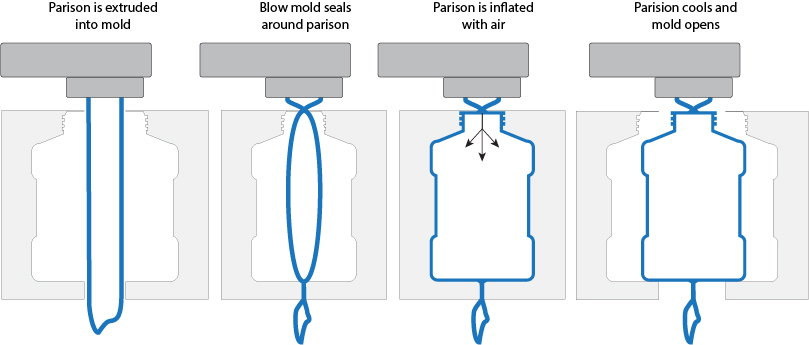
Extrusion blow molding can produce complex shapes and large sizes with low material and energy consumption.
Extrusion blow molding can use a wide range of polymers and additives to modify the properties and performance of the products.
Extrusion blow molding can produce products with high quality and consistency, as well as low residual stress and flash.
Extrusion blow molding can have difficulty controlling the wall thickness and the dimensional accuracy of the products.
Extrusion blow molding can have limited design flexibility and mold availability, as well as high tooling and maintenance costs.
Extrusion blow molding can have environmental and health issues, such as noise, dust, and emissions.
The basic principle and mechanism of extrusion blow molding is to extrude a molten tube of polymer (called a parison) through a die and capture it between two mold halves, then inflate it with air to conform to the mold cavity, and finally cool and eject the hollow part. The process can be divided into four main stages: extrusion, clamping, blowing, and ejection.
The extrusion stage involves feeding the polymer pellets or granules into a hopper and melting them in a heated barrel with a rotating screw. The screw pushes the molten polymer through a die head, which has an annular opening that forms the parison. The die head can have different shapes and sizes, depending on the desired shape and size of the product. The die head can also have a core rod or a blow pin, which is used to create a hole in the parison for the air to enter. The extrusion speed and the die gap can affect the thickness and the length of the parison.
The clamping stage involves closing the two mold halves around the parison and sealing it at both ends. The mold can have different shapes and sizes, depending on the desired shape and size of the product. The mold can also have cooling channels, which are used to cool the product and solidify the polymer. The mold temperature and the clamping force can affect the quality and the performance of the product.
The blowing stage involves inserting the blow pin or the core rod into the parison and injecting compressed air into it. The air pressure inflates the parison and pushes it against the mold cavity, forming the shape of the product. The air pressure and the blowing time can affect the wall thickness and the dimensional accuracy of the product.
The ejection stage involves opening the mold halves and removing the product from the mold. The product can have some excess material or flash around the edges, which can be trimmed or cut off by a cutter or a trimmer. The product can also have some cooling marks or defects, which can be inspected and corrected by a quality control system. The ejection speed and the cooling time can affect the cycle time and the productivity of the process.
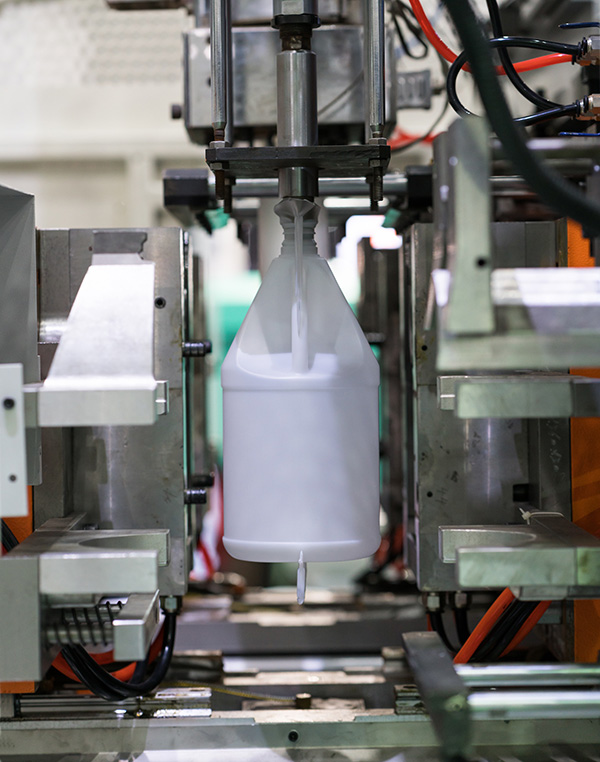
Extrusion blow molding can use a wide range of polymers and additives to modify the properties and performance of the products. Polymers are large molecules that consist of repeating units called monomers. Additives are small molecules that are added to polymers to enhance or alter their characteristics. The types and properties of polymers and additives used for extrusion blow molding depend on the desired features and functions of the products, such as strength, hardness, ductility, conductivity, or corrosion resistance.
Polymers can be classified into two main categories: thermoplastics and thermosets. Thermoplastics are polymers that can be melted and reshaped by heating and cooling. Thermosets are polymers that cannot be melted and reshaped once they are cured by heat or chemicals. Extrusion blow molding mainly uses thermoplastics, as they are more suitable for the process.
PVC stands for polyvinyl chloride, which is a polymer that contains chlorine atoms. PVC is one of the most widely used polymers for extrusion blow molding, due to its low cost, high strength, and good resistance to chemicals and fire. PVC can be further classified into rigid PVC and flexible PVC, depending on the amount of plasticizer added. Rigid PVC is used for applications that require stiffness and durability, such as pipes, fittings, and window frames. Flexible PVC is used for applications that require flexibility and softness, such as hoses, tubing, and films.
HDPE stands for high-density polyethylene, which is a polymer that contains only carbon and hydrogen atoms. HDPE is one of the most versatile polymers for extrusion blow molding, due to its high strength, low density, and good resistance to impact and abrasion. HDPE can be used for applications that require toughness and durability, such as bottles, containers, drums, and toys.
PP stands for polypropylene, which is a polymer that contains only carbon and hydrogen atoms. PP is one of the most flexible polymers for extrusion blow molding, due to its high melting point, low density, and good resistance to heat and chemicals. PP can be used for applications that require high temperature and chemical resistance, such as food packaging, medical devices, and automotive parts.
PETG stands for polyethylene terephthalate glycol, which is a polymer that contains carbon, hydrogen, and oxygen atoms. PETG is a type of polyester that has been modified with glycol to improve its properties. PETG is one of the most transparent and glossy polymers for extrusion blow molding, due to its high clarity, low haze, and good resistance to UV and chemicals. PETG can be used for applications that require transparency and aesthetics, such as cosmetic bottles, jars, and displays.
PC stands for polycarbonate, which is a polymer that contains carbon, hydrogen, and oxygen atoms. PC is one of the most rigid and impact-resistant polymers for extrusion blow molding, due to its high strength, high modulus, and good resistance to heat and chemicals. PC can be used for applications that require high performance and safety, such as helmets, lenses, and bulletproof glass.
Nylon is a generic name for a family of polymers that contain carbon, hydrogen, oxygen, and nitrogen atoms. Nylon is one of the most durable and abrasion-resistant polymers for extrusion blow molding, due to its high strength, high elasticity, and good resistance to wear and tear. Nylon can be used for applications that require high wear and tear resistance, such as gears, bearings, and bushings.
Delrin is a trade name for a type of acetal resin, which is a polymer that contains carbon, hydrogen, and oxygen atoms. Delrin is one of the most stable and lubricious polymers for extrusion blow molding, due to its low friction, low moisture absorption, and good resistance to fatigue and creep. Delrin can be used for applications that require low friction and high stability, such as zippers, clips, and hinges.
The Most Commonly Used Additives For Extrusion Blow Molding
Colorants are additives that are used to impart color to the polymers. Colorants can be either organic or inorganic, depending on their chemical composition. Organic colorants are derived from natural or synthetic sources, such as plants, animals, or petroleum. Inorganic colorants are derived from minerals or metals, such as iron, copper, or titanium. Colorants can be either pigments or dyes, depending on their solubility. Pigments are insoluble particles that are dispersed in the polymers. Dyes are soluble molecules that are dissolved in the polymers.
Stabilizers are additives that are used to protect the polymers from degradation caused by heat, light, or oxygen. Stabilizers can be either antioxidants or UV absorbers, depending on their mechanism. Antioxidants are additives that prevent or slow down the oxidation of the polymers, which can cause discoloration, brittleness, or cracking. UV absorbers are additives that absorb or reflect the ultraviolet radiation from the sun, which can cause fading, yellowing, or cracking.
Plasticizers are additives that are used to increase the flexibility and softness of the polymers. Plasticizers are usually low molecular weight molecules that are mixed with the polymers, reducing their intermolecular forces and increasing their free volume. Plasticizers can also lower the melting point, viscosity, and glass transition temperature of the polymers, making them easier to process and mold.
Lubricants are additives that are used to reduce the friction and wear of the polymers. Lubricants are usually waxy or oily substances that are applied to the surface or mixed with the polymers, creating a thin film that reduces the contact and adhesion between the polymers and the mold or the equipment. Lubricants can also improve the flow, release, and appearance of the polymers, making them smoother and shinier.
Fillers are additives that are used to increase the bulk and weight of the polymers. Fillers are usually inert or semi-inert particles that are added to the polymers, increasing their density, stiffness, and strength. Fillers can also reduce the cost, shrinkage, and thermal expansion of the polymers, making them more economical and stable. Fillers can also modify the appearance and performance of the polymers, such as their color, texture, or conductivity.
Single-screw is a method of mixing and compounding that uses a single rotating screw inside a heated barrel. The screw transports, melts, and mixes the materials along the barrel, and then pushes them through a die head. Single-screw is a simple and economical method, but it has limited mixing and compounding capabilities, as well as low output and quality.
Twin-screw is a method of mixing and compounding that uses two intermeshing or co-rotating screws inside a heated barrel. The screws transport, melt, and mix the materials along the barrel, and then push them through a die head. Twin-screw is a more complex and expensive method, but it has better mixing and compounding capabilities, as well as higher output and quality.
Co-extrusion is a technique of mixing and compounding that uses two or more extruders and a die head to produce a multi-layered product. The extruders feed different materials into the die head, which combines them into a single parison with different layers. Co-extrusion is a more advanced and versatile technique, but it requires more equipment and coordination, as well as higher cost and complexity.
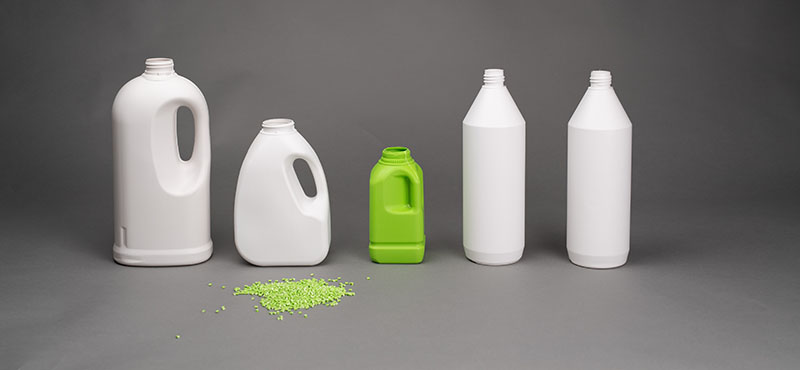
Extrusion blow molding is used for various applications in different industries and sectors, due to its design flexibility, production efficiency, material savings, and environmental impact.
Bottles are one of the most common products that use extrusion blow molding, as they can be produced in different shapes, sizes, and colors, with different features and functions, such as handles, caps, labels, or spouts. Bottles can be used for storing and dispensing liquids, such as water, milk, juice, soda, oil, shampoo, or detergent. Bottles can be made from different polymers, such as HDPE, PP, PETG, or PVC, depending on the properties and compatibility of the liquids. Bottles can also be recycled or reused, reducing the waste and pollution.
Jars are another common product that use extrusion blow molding, as they can be produced in different shapes, sizes, and colors, with different features and functions, such as lids, seals, labels, or handles. Jars can be used for storing and preserving solids or semi-solids, such as food, candy, jam, honey, or cosmetics. Jars can be made from different polymers, such as HDPE, PP, PETG, or PVC, depending on the properties and compatibility of the contents. Jars can also be recycled or reused, reducing the waste and pollution.
Jugs are a type of product that use extrusion blow molding, as they can be produced in different shapes, sizes, and colors, with different features and functions, such as handles, spouts, caps, labels, or vents. Jugs can be used for storing and dispensing large volumes of liquids, such as water, milk, juice, oil, or gasoline. Jugs can be made from different polymers, such as HDPE, PP, PETG, or PVC, depending on the properties and compatibility of the liquids. Jugs can also be recycled or reused, reducing the waste and pollution.
Containers are a type of product that use extrusion blow molding, as they can be produced in different shapes, sizes, and colors, with different features and functions, such as lids, handles, labels, or locks. Containers can be used for storing and transporting solids or semi-solids, such as food, candy, toys, or tools. Containers can be made from different polymers, such as HDPE, PP, PETG, or PVC, depending on the properties and compatibility of the contents. Containers can also be recycled or reused, reducing the waste and pollution.
Tanks are a type of product that use extrusion blow molding, as they can be produced in different shapes, sizes, and colors, with different features and functions, such as valves, fittings, labels, or vents. Tanks can be used for storing and transporting large volumes of liquids or gases, such as water, oil, gas, or air. Tanks can be made from different polymers, such as HDPE, PP, PETG, or PVC, depending on the properties and compatibility of the liquids or gases. Tanks can also be recycled or reused, reducing the waste and pollution.
Drums are a type of product that use extrusion blow molding, as they can be produced in different shapes, sizes, and colors, with different features and functions, such as lids, handles, labels, or seals. Drums can be used for storing and transporting large volumes of liquids or solids, such as chemicals, paints, fertilizers, or grains. Drums can be made from different polymers, such as HDPE, PP, PETG, or PVC, depending on the properties and compatibility of the liquids or solids. Drums can also be recycled or reused, reducing the waste and pollution.
Toys are a type of product that use extrusion blow molding, as they can be produced in different shapes, sizes, and colors, with different features and functions, such as sounds, lights, or movements. Toys can be used for entertainment and education, such as dolls, balls, cars, or animals. Toys can be made from different polymers, such as HDPE, PP, PETG, or PVC, depending on the properties and safety of the materials. Toys can also be recycled or reused, reducing the waste and pollution.
Furniture is a type of product that use extrusion blow molding, as they can be produced in different shapes, sizes, and colors, with different features and functions, such as cushions, legs, or backs. Furniture can be used for comfort and decoration, such as chairs, tables, stools, or benches. Furniture can be made from different polymers, such as HDPE, PP, PETG, or PVC, depending on the properties and durability of the materials. Furniture can also be recycled or reused, reducing the waste and pollution.
Automotive parts are a type of product that use extrusion blow molding, as they can be produced in different shapes, sizes, and colors, with different features and functions, such as airbags, bumpers, fuel tanks, or ducts. Automotive parts can be used for performance and safety, such as reducing the weight, improving the aerodynamics, or protecting the passengers. Automotive parts can be made from different polymers, such as HDPE, PP, PETG, or PC, depending on the properties and compatibility of the materials. Automotive parts can also be recycled or reused, reducing the waste and pollution.
Medical devices are a type of product that use extrusion blow molding, as they can be produced in different shapes, sizes, and colors, with different features and functions, such as tubes, bags, bottles, or syringes. Medical devices can be used for diagnosis and treatment, such as delivering fluids, drugs, or oxygen, or collecting blood, urine, or saliva. Medical devices can be made from different polymers, such as HDPE, PP, PETG, or PVC, depending on the properties and biocompatibility of the materials. Medical devices can also be recycled or reused, reducing the waste and pollution.
The parameters of extrusion blow molding, such as the extrusion speed, the die gap, the parison thickness, the blow pressure, the mold temperature, and the cooling time, can affect the quality and performance of the products. Optimizing the parameters can improve the wall thickness, the dimensional accuracy, the properties, and the performance of the products, as well as the cycle time and the productivity of the process.
The polymers and additives used for extrusion blow molding, such as PVC, HDPE, PP, PETG, PC, nylon, delrin, colorants, stabilizers, plasticizers, lubricants, and fillers, can affect the properties and performance of the products. Selecting the appropriate polymers and additives can improve the strength, hardness, ductility, conductivity, or corrosion resistance of the products, as well as the compatibility and safety of the materials.
The properties and performance of the products produced by extrusion blow molding, such as their shape, size, color, function, or feature, can affect their quality and value. Enhancing the properties and performance of the products can improve their appearance, functionality, durability, or safety, as well as their marketability and profitability.
The market opportunities of the products produced by extrusion blow molding, such as their demand, supply, or competition, can affect their success and growth. Expanding the market opportunities of the products can increase their
This article thoroughly covers the process, materials, and applications of extrusion blow molding. It details the steps, equipment, and parameters involved, explores various polymer types and additives used, and offers real-world examples from industries employing this method. Additionally, it provides valuable recommendations to enhance the process, materials, and applications of extrusion blow molding.If you need extrusion blow molding services, you can contact Richconn and we can provide you with this service.
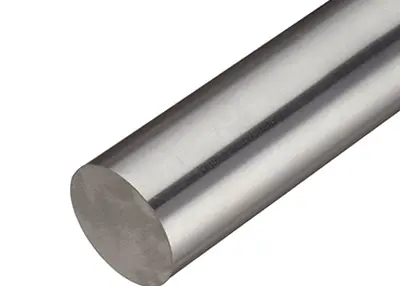 Can Titanium Be Machined: Comprehensive analysis of CNC machining of titanium materialsNovember 10, 2023Greetings, machining enthusiasts! Have you ever wondered if titanium, that resilient and lightweight metal, can truly be harnessed through CNC machining? I'm here to not only answer your burning question but to delve into the intricacies, challenges, and best practices associated with machining titanium. As Richconn, your go-to precision machine shop, let's unlock the full potential of this extraordinary material together.view
Can Titanium Be Machined: Comprehensive analysis of CNC machining of titanium materialsNovember 10, 2023Greetings, machining enthusiasts! Have you ever wondered if titanium, that resilient and lightweight metal, can truly be harnessed through CNC machining? I'm here to not only answer your burning question but to delve into the intricacies, challenges, and best practices associated with machining titanium. As Richconn, your go-to precision machine shop, let's unlock the full potential of this extraordinary material together.view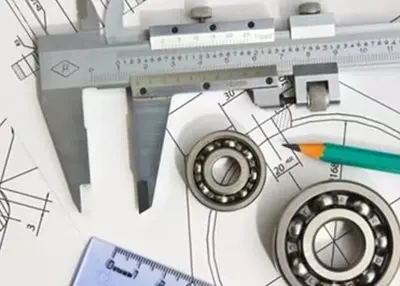 The Basics of Engineering Drawing and Tips for NewcomersApril 7, 2024The article gives some useful tips on how to make engineering drawings easily to help you better communicate your ideas clearly.view
The Basics of Engineering Drawing and Tips for NewcomersApril 7, 2024The article gives some useful tips on how to make engineering drawings easily to help you better communicate your ideas clearly.view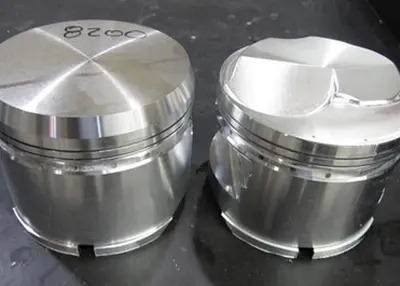 CNC Piston Machining: Crafting High-Quality Engine ComponentsNovember 7, 2023Are you in pursuit of engine components that combine precision, reliability, and performance? Your quest for top-notch CNC piston machining ends here. In this comprehensive guide, I will take you on a journey through the intricacies of CNC piston machining, shedding light on the processes, technologies, and services that define this critical aspect of engine manufacturing.view
CNC Piston Machining: Crafting High-Quality Engine ComponentsNovember 7, 2023Are you in pursuit of engine components that combine precision, reliability, and performance? Your quest for top-notch CNC piston machining ends here. In this comprehensive guide, I will take you on a journey through the intricacies of CNC piston machining, shedding light on the processes, technologies, and services that define this critical aspect of engine manufacturing.view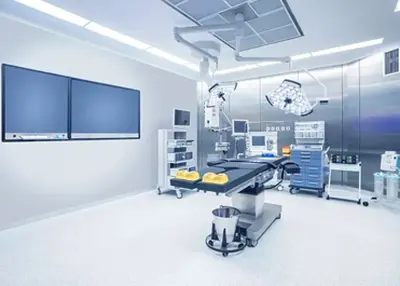 Factors Affecting the Quality of CNC Machining Precision PartsApril 4, 2023Today, mechanization and automation have become mainstream in industry development. In the application process of machine equipment consisting of various parts, problems are prone to occur due to the ...view
Factors Affecting the Quality of CNC Machining Precision PartsApril 4, 2023Today, mechanization and automation have become mainstream in industry development. In the application process of machine equipment consisting of various parts, problems are prone to occur due to the ...view Electrophoretic Coating Process Details and Electrophoretic Paint Selection GuideJune 17, 2024Electrophoretic Coating is a cutting-edge technology that has revolutionized the manufacturing landscape. By offering consistent, uniform surface coverage along with unmatched durability and corrosion...view
Electrophoretic Coating Process Details and Electrophoretic Paint Selection GuideJune 17, 2024Electrophoretic Coating is a cutting-edge technology that has revolutionized the manufacturing landscape. By offering consistent, uniform surface coverage along with unmatched durability and corrosion...view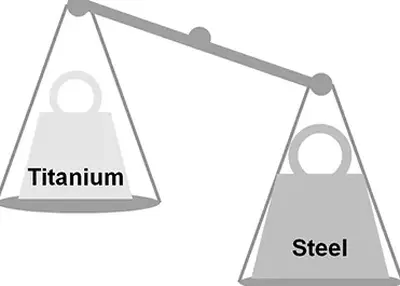 Titanium vs Stainless Steel: Choosing the Right Material for Your MachiningNovember 24, 2023Understand the differences between titanium and stainless steel and choose the best material for CNC machining.view
Titanium vs Stainless Steel: Choosing the Right Material for Your MachiningNovember 24, 2023Understand the differences between titanium and stainless steel and choose the best material for CNC machining.view